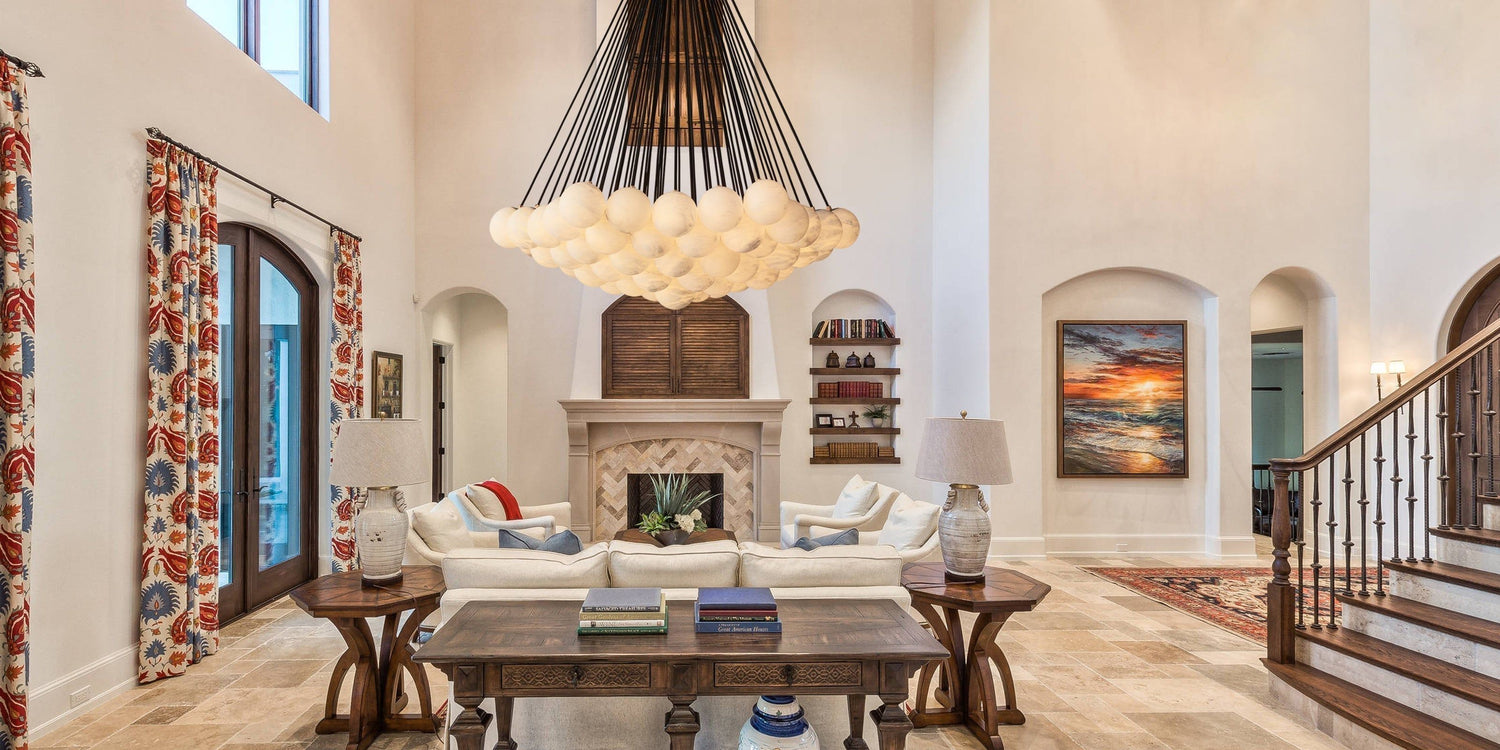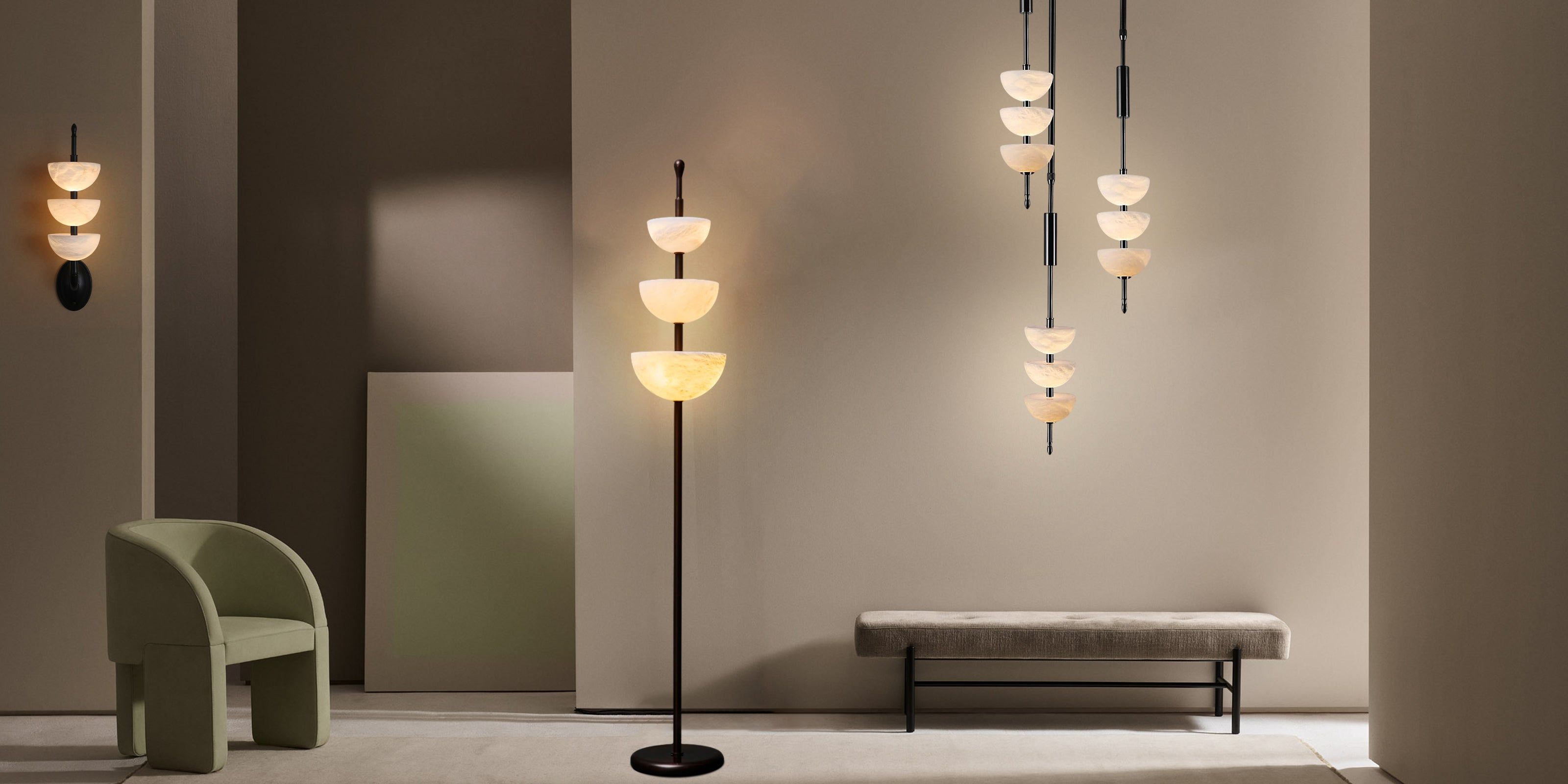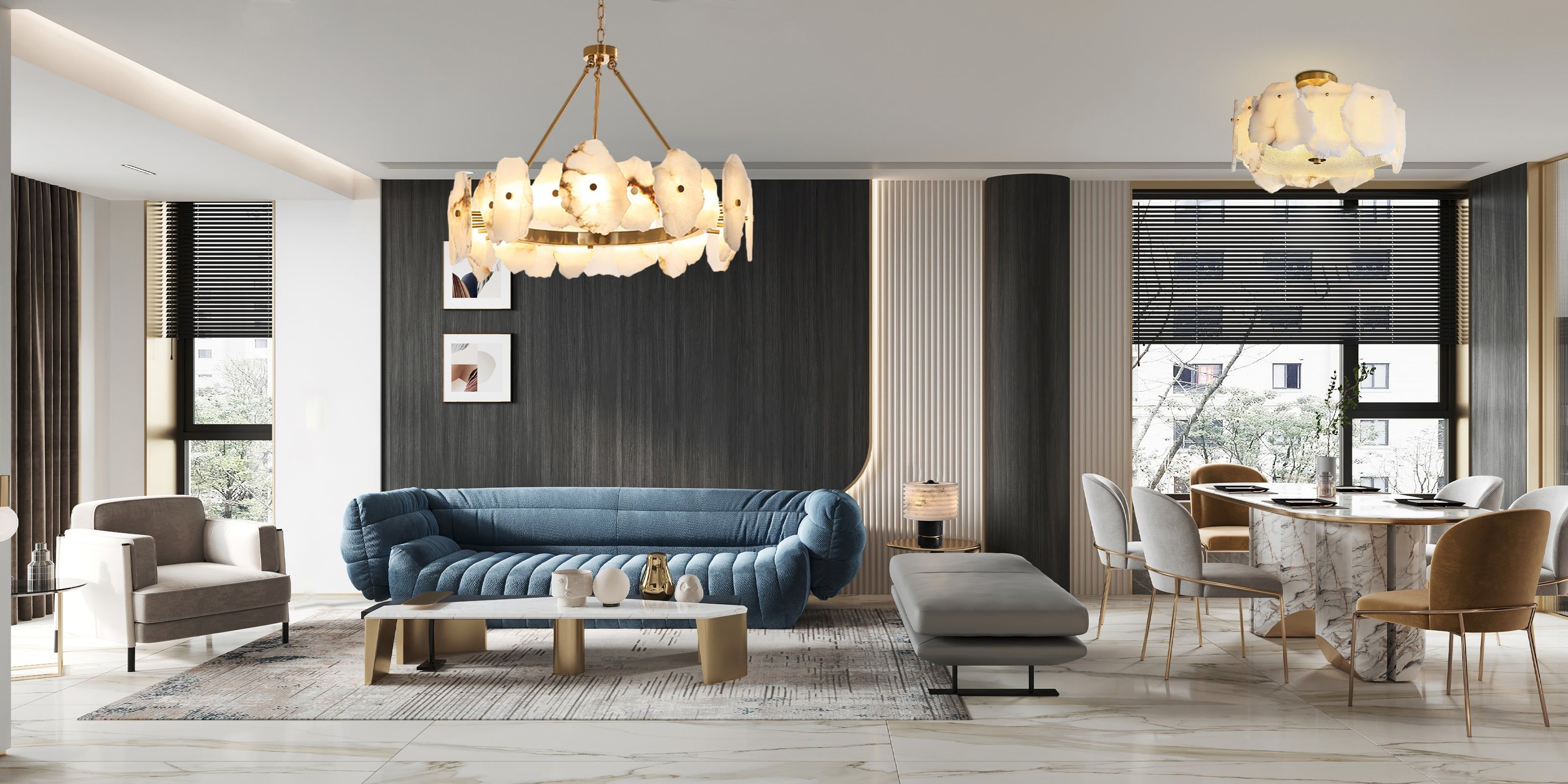Struggling to see what's on your chopping board? Or wishing for that cozy ambience when friends are over? Pendant lights are here to save the day. They're not just stylish – they make your kitchen function better, too. If you're trying to figure out how high to hang a light over the island or how many pendants are too many, stick around. We'll sort it all out.

Key Considerations Before Positioning Pendant Lights
- Identify your main workspaces:
Take a closer look at where you perform most of your tasks - maybe it's the kitchen island, the countertops, or near the stove and sink. Place pendant lighting for kitchen strategically above these areas to ensure they provide focused lighting for food prep and cooking.
- Choose appropriate sizes:
Select pendant lights that are proportional to the size of your kitchen and its key features. For a large kitchen island measuring around 8 feet, you might consider two medium-sized pendants or three smaller ones evenly spaced across the length of the island.
Conversely, for a smaller kitchen with limited space, a single larger pendant could serve as a statement piece without overwhelming the area.
- Balance with natural light and existing fixtures:
Evaluate how much sunlight your kitchen receives by paying attention to windows' positioning – south-facing windows, for instance, could provide ample sunlight throughout the day, potentially reducing the need for additional lighting during those hours.
Moreover, ensure your pendant lights blend well with other sources, such as recessed ceiling lights which might already brighten up general kitchen areas, or under-cabinet lighting that offers task-specific illumination.
How to Hang Pendant Lights Over Your Kitchen Island
Choosing the Right Height for Your Lights
When hanging pendant lights over your kitchen island, getting the height right is important. If they're too high, they won't light up your workspace properly. Too low, and they could be in the way or make it feel like there's a spotlight on you. A good height to aim for is between 30 to 36 inches from the island counter. But remember, if someone tall lives with you, you might need to hang them a bit higher to keep things comfortable.
Figuring Out How Many Lights You Need
You'll also need to decide how many lights to hang. This depends on how big your island is and the size of the lights you're choosing. For a standard kitchen island, about 6 feet long, two medium-sized pendants should do the trick. If you have a larger island, say around 8 feet or more, three pendants will ensure even lighting across the surface without leaving dim spots.
Where to Place Your Lights: Centered or Not?
Centering pendant lights for kitchen over your island is a common choice for balance and symmetry, particularly with rectangular islands.
- If your island is 6 feet long, aim to space your two pendants evenly apart, so each light covers an equal area of the workspace.
- But if you have unique features, like an L-shaped island or a dining area that's part of the island but off to one side, you may want to position the lights strategically.
- In an L-shaped island setup, place one pendant at the heart of each leg of the L, roughly equidistant from the ends and the corner where the two sections meet, ensuring both parts receive adequate light.
- When a dining area extends from your island, center the pendants above this section rather than the entire island length to create an inviting dining atmosphere and focal point.
How Much Space to Leave Between Lights
If the lights are too close, it feels cluttered; too far apart, and there are dark spots. Aim for a balance that fits with the size of your kitchen.
- For small pendants (around 6 inches in diameter), aim for approximately 18-24 inches between each light. This close proximity ensures no dark spots while maintaining a clean look.
- Standard-sized pendants (about 8-10 inches in diameter) typically work well with 24-30 inches of space between them. For example, on a 6-foot island, you could comfortably fit three pendants spaced about 28 inches apart.
-
Large pendants (12 inches in diameter or more) need more room to breathe, so consider leaving 30-36 inches of space between each fixture. On an 8-foot island, two large pendants could be placed roughly 32 inches apart from their centers, aligning with the thirds of the island length, ensuring even distribution of light and visual impact.

How to Hang Your Pendant Lights Safely and Correctly
First things first, you need to make sure it’s safe to hang your pendant lights. If you're not too sure about how to handle electrical stuff, it's better to call an electrician. They'll check that your wiring is right, everything meets electrical standards, and that your ceiling can hold the light's weight. Better safe than sorry!
Ready to hang your lights? Here's what you’ll typically need to do:
- Turn off the power! Seriously, don't skip this.
- Remove the old fixture if there's one hanging around. Unscrew and carefully lower it down.
- Install a new mounting bracket if needed – that's what will hold your pendant in place.
- Wire your pendant light to the junction box. White wire to white wire, black to black, green or bare copper to the ground screw. Secure them with wire connectors and wrap them with electrical tape for good measure.
- Screw in the mounting screws and slide your fixture canopy (the part that covers the junction box) up to the ceiling.
- Attach your pendant light to the mounting bracket following the manufacturer's instructions. This might include hooking it on or using more screws.
- Insert a bulb, restore power, and flip the switch to test.
If you need to move the lights left or right a smidge, you can slightly bend the mounting bracket inside the canopy—it's metal, so it should give a little. But be gentle; we’re bending, not breaking.
How to Choose Pendant Lights That Fit Your Kitchen Style
Matching Lights with Your Kitchen Decor
When you choose pendant lights for kitchen, look around your kitchen first. You want these new lights to go well with what you already have.
|
Kitchen Style |
Suggested Pendant Light |
Why It Works |
|
Modern |
Metal Finish |
Matches the clean, sharp look. |
|
Country or Rustic |
Warm Light, Wood Details |
Complements wood and a cozy vibe. |
|
Plain |
Bright Color |
Adds a fun touch to a simple space. |
Working with Your Kitchen's Lighting Layers
Your kitchen needs different kinds of light for different reasons – that's called layered lighting.
|
What It Lights Up |
Purpose |
How Pendants Help |
|
Whole Room |
Overall light |
Pendants add focused light without glare. |
|
Counters |
Lights up workspaces |
They provide extra light where you need it. |
|
Stove Area |
Helps you see while cooking |
Pendants should make the area cozier. |

Common Pitfalls to Avoid When Positioning Pendant Lights
Mistake 1: Overcrowding Pendants in Small Spaces
Bigger isn't always better, especially when we're talking about pendants in a cozy kitchen. Jamming too many lights into a tight spot can feel like a light showroom rather than a warm home space. If your kitchen is on the smaller side, think about using fewer pendants or opting for slimmer designs. This way, you get that nice glow without making it feel cramped.
Mistake 2: Choosing Style Over Practical Illumination Needs
Sure, that giant, intricate pendant light might look straight out of a design magazine, but will it light up your countertop where you actually need it? Always remember why you're hanging a pendant light in the first place – to see what you're doing! Pick a light that looks great, yes, but one that also does the job of, well, lighting.
Mistake 3: Ignoring Adjustability and Flexibility for Future Changes
Life changes, and so might your kitchen layout or design down the road. When choosing pendant lights, think about whether they can be adjusted or moved easily. That way, if you decide to reposition your island or change up your décor, your lighting can adapt too. Look for pendants with adjustable cords or chains; it can save you from having to replace them if your taste or needs change over time.

How to Maintain and Update Your Pendant Lighting
How to Care for Your Pendant Lights
- Dust them off every week with a feather duster or a soft cloth.
- Occasionally give them a deeper clean. For glass or metal, just mix warm water with a squirt of dish soap. Wipe gently, rinse with a damp cloth, and dry them well.
- Be careful with the light bulbs. Make sure they're cool before you touch them, then wipe off any marks or dust with a soft cloth.
- Check all the nuts and screws from time to time to keep everything tight. Remember: Always cut the power before you start cleaning your lights.
When It's Time to Update Your Pendant Lights
- Look out for style changes. If your kitchen gets a makeover, or if those lights just don't look right anymore, it might be time for new ones.
- Consider functionality. If the light isn't bright enough or doesn't fit your taste now, go ahead and find a replacement.
- Stay up-to-date with technology. LED options save energy and can last longer. If you're still using old bulbs, switching to LEDs could be a smart move.
Update and Care for Your Kitchen Pendant Lights
Your kitchen pendant lights are more than just decorations. They help you see what you're doing and add to the room's feel. Keep them clean with a simple weekly dusting, so they always look nice. And if they start to look out of style or you hear about better bulbs that save energy and money, it could be time for an update. This way, your kitchen stays practical and inviting, and everyone loves spending time there.




Leave a comment
This site is protected by hCaptcha and the hCaptcha Privacy Policy and Terms of Service apply.